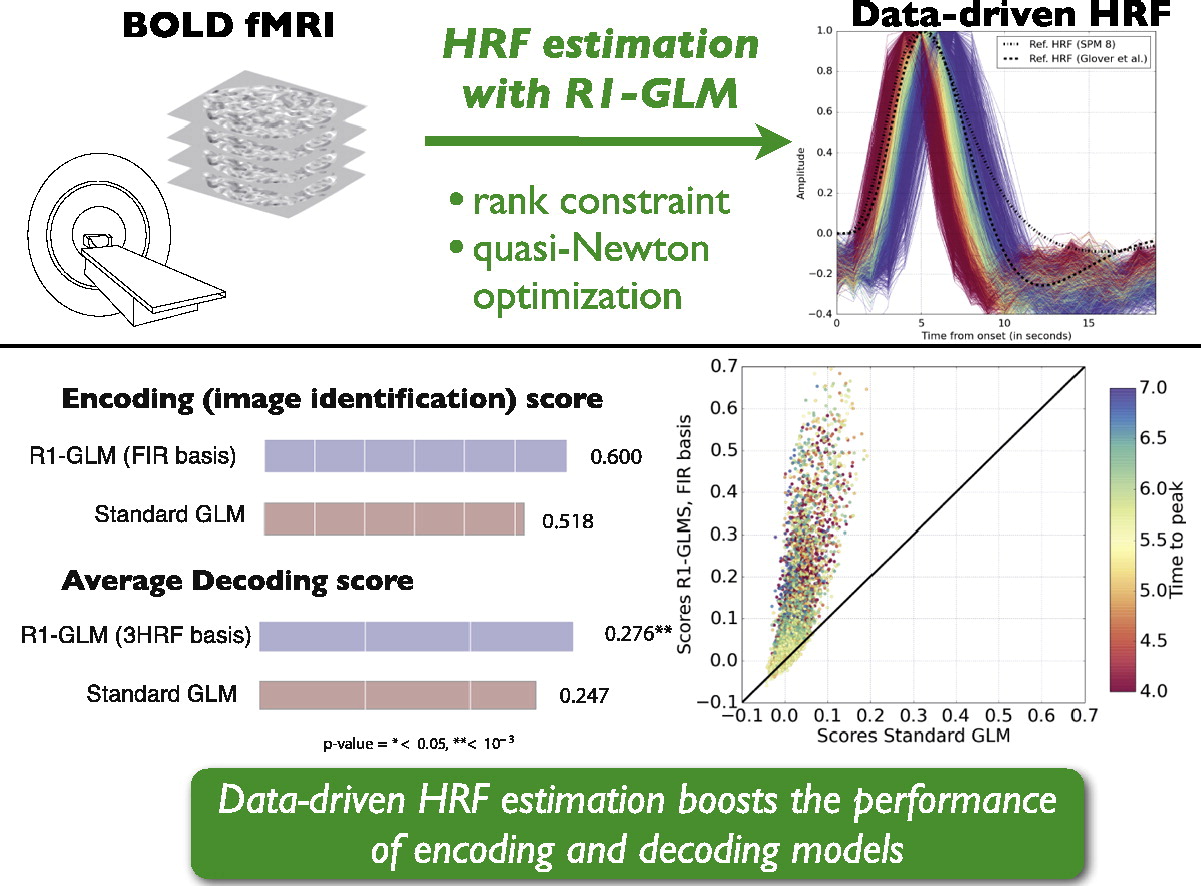Data-driven hemodynamic response function estimation
My latest research paper[1] deals with the estimation of the hemodynamic response function (HRF) from fMRI data.

This is an important topic since the knowledge of a hemodynamic response function is what makes it possible to extract the brain activation maps that are used in most of the impressive applications of machine learning to fMRI, such as (but not limited to) the reconstruction of visual images from brain activity [2] [3] or the decoding of numbers [4].
Besides the more traditional paper that describes the method, I've put online the code I used for the experiments. The code at this stage is far from perfect but it should help in reproducing the results or improving the method. I've also put online an ipython notebook with the analysis of a small piece of data. I'm obviously glad to receive feedback/bug reports/patches for this code.
-
Pedregosa, Fabian, et al. "Data-driven HRF estimation for encoding and decoding models.", Neuroimage, (2014). Also available here as an arXiv preprint. ↩
-
Miyawaki, Yoichi et al., "Visual Image Reconstruction from Human Brain Activity using a Combination of Multiscale Local Image Decoders", Neuron (2008). ↩
-
Kay, Kendrick N., et al. "Identifying natural images from human brain activity." Nature 452.7185 (2008). ↩
-
Eger, Evelyn, et al. "Deciphering cortical number coding from human brain activity patterns." Current Biology 19.19 (2009). ↩